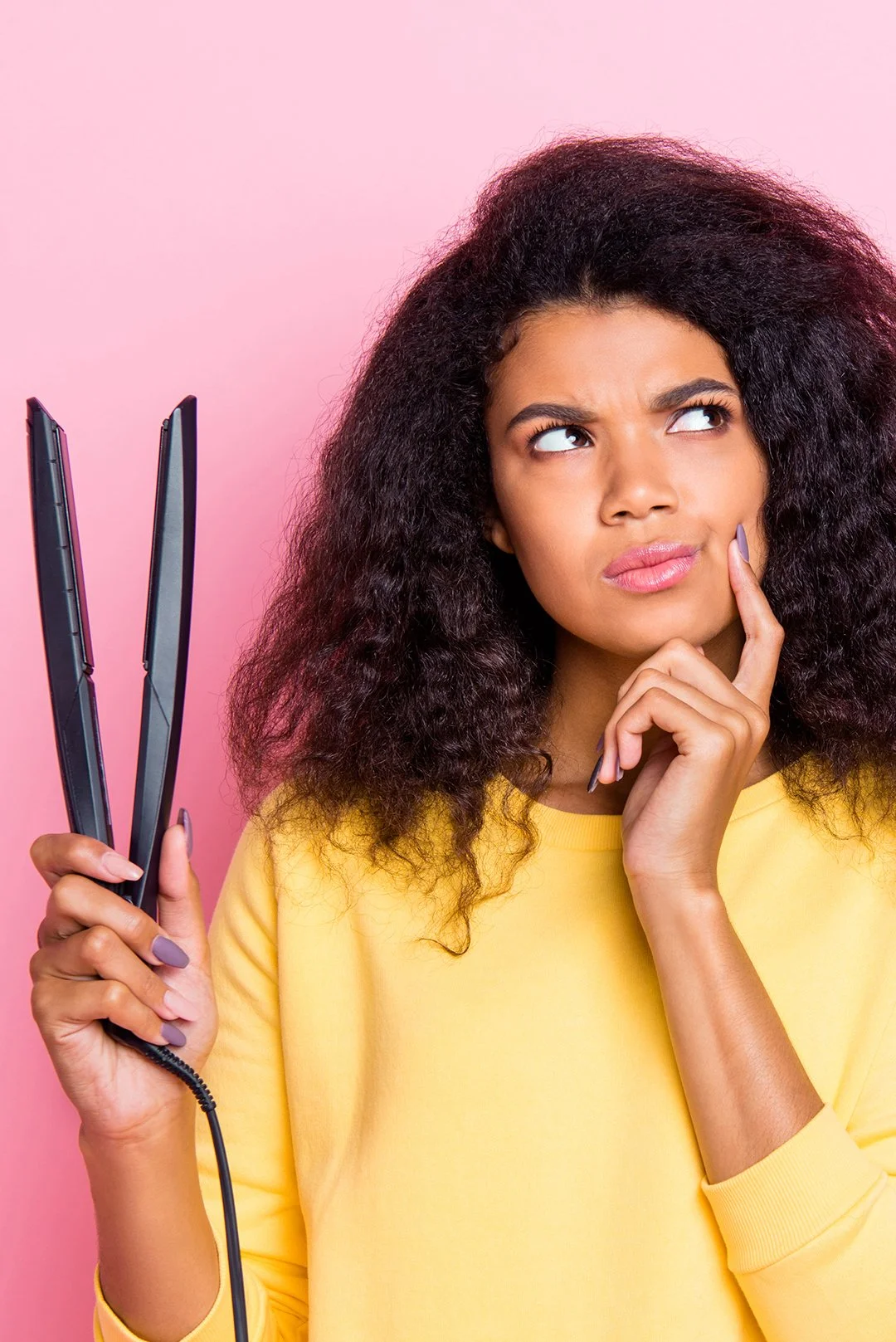So, I am currently recovering from some heat damage. It is not extensive, thank God! But enough to remind me and hopefully you that every time you use heat, you are taking a risk. This risk can be managed, but it cannot be eliminated. It cannot be eliminated even if you take all the precautions I outline below, especially if you decide to use a flat iron or a curling tong. I do not want to scare you, I will still be blow drying my hair and enjoying my hair in this manner. I just wouldn't be using curling tongs which caused the damage.
This is the first time I have had heat damage since being on a healthy hair journey. I took all the necessary precautions and yet the curling tong was just too hot along areas of my hair that is naturally weaker. Most people forget, myself included that the strength of our hair is not the same across our whole head. The areas that were curled were sadly the areas that couldn’t take as much heat.
I am not devastated, my hair will recover, I am just glad it was not extensive and it has taught me to be even more careful. In fact, I may stay away from curling tongs all together henceforth.
I am writing this blog as a reminder that no one is above heat damage, that you can’t full proof guard against it even if you take precautions, but you can certainly reduce the chances of heat damage by taking the following precautions:
-
Choose a blow dryer over flat iron:
I got the perimeters of my hair damaged from a curling tong, not blow drying - this is important because too many people are scared of blow drying their hair when I consider that the thing you need to really be wary of is flat ironing and curling tongs. With blow drying, you can adopt the ‘tension method’ where you hold the heat appliance a few inches from your hair when blow drying. This means the heat is not directly placed on your hair. Even a brush or comb provides a barrier that can help mitigate damage (just note that the brushing can be stressful on the strands).
2. Use heat on clean hair only:
Always cleanse your hair before applying heat, you do not want to bake dirt residues of oils and styling products into your hair.
3. Deep condition hair after washing:
Deep condition after washing. Good deep conditioners will deposit a film over your hair providing extra strength and a barrier to heat. If you have a deep conditioner with silicone, even better!
4. Use a heat protectant:
A heat protectant minimises heat damage by adding a protective layer to your hair, and more importantly it helps to slow down heat transfer to your hair. But they are not foolproof, if it was, my hair wouldn’t be damaged!! get it!! Heat protectants cannot protect all damage. Good heat protectants can also help to seal in moisture and smooth the cuticle of your hair.
After blow drying your hair, add drops of Khalila oil to help prevent further moisture loss. You don’t want a heavy oil that will make your hair look limp or wet, keeping it light and fluffy with an effective oil will help you prolong the blow-dry. Comb your hair with a widetooth comb and make sure the oil spreads evenly across your hair strands.





